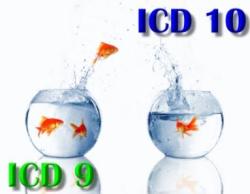The health care Industry in US is preparing itself for a major upcoming change that will soon be brought into action on the 1st Oct 2014. The presently used coding system, ICD-9-CM that helps classify diseases and various health conditions will be replaced by a more complex and specific ICD-10-CM.
The full form of ICD is International Classification of Diseases. It was circulated among various countries that used them since many decades. The present version was first used by the World Health Organization (WHO). This was then modified and made suitable for the use by healthcare providers and healthcare plans. ICD-9-CM is being used since the 1970s.
It is necessary to have good responsible medical coding professionals for the billing process. It is important that every time a patient receives a treatment in the hospital it should be added in the records that would move on for further billing.
Differences between ICD-9-CM and ICD-10-CM
The ICD-9-CM is being used since almost 3 decades now. It is difficult to import the current rapidly changing technology or upcoming medical algorithms into this coding system. With the increasing complexity of technology and the algorithms used, it is now time to bring into action an all together new coding system that would support the present trend of technology as well as keep us well prepared for the future advancements. Medical codes included in ICD-9-CM are less specific and cannot be used to represent complex diseases or treatments.
The basic difference between these two coding systems is the number of codes available in them. The ICD-9-CM includes about 14,000 diagnosis codes and 4,000 procedural codes. The upcoming ICD-10-CM would include about 68,000 diagnosis codes and an additional 72,000 procedural codes.
The codes in ICD-9-CM have about 3 to 5 characters in them, whereas, codes in ICD-10-CM will have about seven characters. In ICD-9-CM, the code begins with a letter or number and will be followed by numbers. In ICD-10-CM, the first character has to be a letter.
Who will be affected by this change?
All the organizations or entities that come under Health Insurance Portability and Accountability Act (HIPAA) should convert their coding system to ICD-10-CM. Up till now HIPAA was effective only on electronic coding systems. But, the new coding system will also be implemented in the manual process. This will bring into use a common coding system that would reduce confusion among different healthcare providers across the world.
Ways to Handle the Transition
The new coding system, ICD-10-CM is an expensive system and the staff that will be handling it will have to undergo extensive training. The software needs to be updated in all places where it is used. Internal and external testing is required to make sure that the practice can produce transactions that are being sent along with the ICD-10 codes and also to check whether transactions are sent and received properly.
It is important to provide proper and appropriate training to the staff for proper execution of medical coding and billing. Usage of ICD-10-CM is scheduled to begin on the 1st Oct 2013. Failure to do so will result in rejection of the codes from ICD-9-CM.

